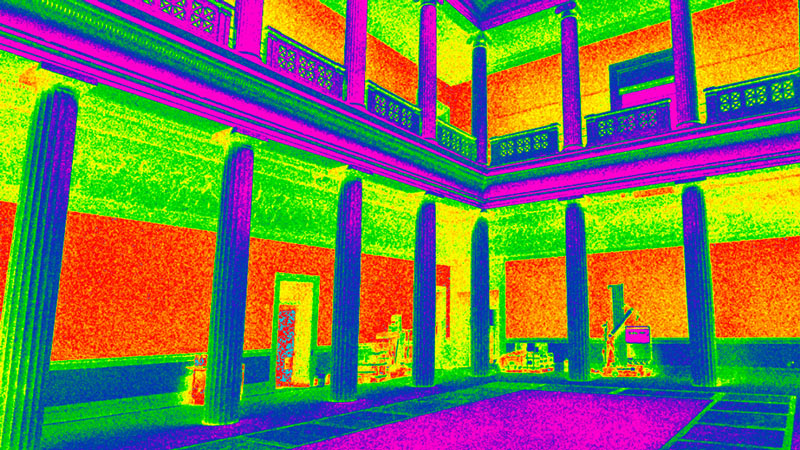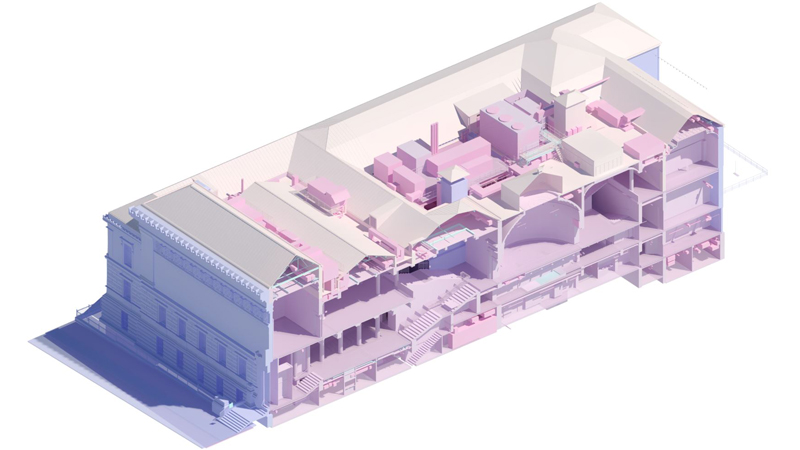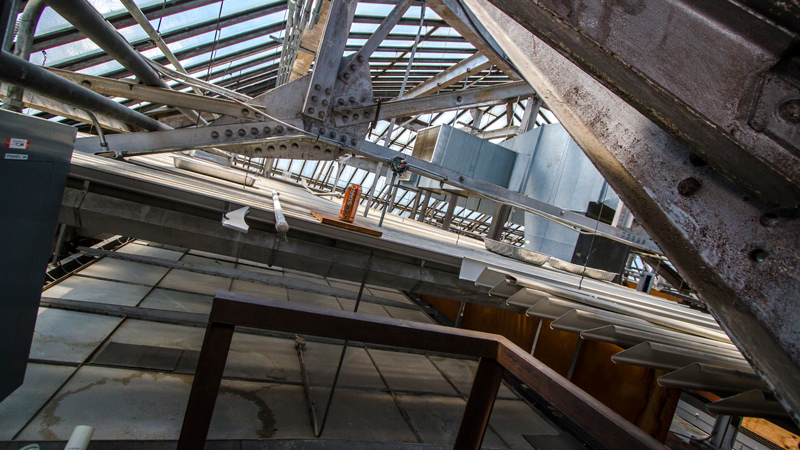Recent Articles
Creative use of technology crucial to adaptive reuse of Corcoran
by Andrew Graham
Project Architect, Columbian College of Arts and Sciences Renovation
For over 100 years, Washington, D.C.’s Corcoran Gallery of Art – which opened as the Flagg Building in 1897 and closed in 2014 – displayed great works of art. Today this building, on the National Register of Historic Places, is being repurposed to train emerging artists and designers to create great works of art. The George Washington University (GWU), Whiting-Turner Construction and LEO A DALY are making this happen – and are using sophisticated tools to uncover building information without damaging the facility’s delicate fabric.
Constructed in 1897, the Corcoran is located on 17th Street, across the street from the White House. The gallery formerly housed the Corcoran School of Art (later known as the Corcoran College of Art + Design). Its stone and brick-clad facades feature elaborately carved marble details, massive bronze doors and copper roofs in the Beaux Arts style.
The museum and college operated in tandem until closing in 2014, when the building and art school were acquired by GWU. The National Gallery of Art is currently the custodian of the collection.
GWU’s Columbian College of Arts and Sciences will be housed in the renovated facility. Because the second floor galleries offer unique exhibition space, that space will be open to the public and managed by the National Gallery of Art.
Repurposing via “Data Eco System”
LEO A DALY was selected to lead the planning and design required to stabilize the building’s deterioration and to surgically insert the required code, infrastructure, and programmatic improvements into its historic fabric to make the landmark a viable structure for contemporary use.

As we began our work with the university, we learned that neither original drawings of the structure nor recent as-built drawings of the 128,000-SF building were available. The building’s age, its specialized use as a gallery and the lack of drawings left many unknowns buried behind historic, ornamentally adorned walls and ceilings and under floors.
Destructive testing was not optimal, as the building was to remain in operation during surveying and cutting into walls and surfaces could disrupt or damage the delicate, aging ornamentation beyond repair.
This inspired the team to develop a “data eco system” based on five data-collection methods:
Laser surveying and point cloud model assembly for creating the building information model (BIM).
Hygrothermal wall analysis to define the U-values of the exterior walls for further evaluation. U-value measures the effectiveness of a material as an insulator.
Computational fluid dynamics modeling, for use in designing mechanical systems.
CCT camera surveying within the pipe systems.
Ground penetration radar (GPR) scanning for the floors, which had been constructed using the “Metropolitan” system that was popular in the East in the late 19th century. This system used gypsum, wood chips and piano wire instead of rebar and concrete. GPR enabled the team to locate the main structural members so they would know where to safely place additional supports.
This data has provided countless benefits to the project, including reducing our site visits by at least 75 percent. We created solutions without spending a great deal of time at the site tracking dimensions – we were “virtually” in the building.
In addition to avoiding destructive testing, the data collection process also provided GWU the data required in its Facilities Information Management Procedures Manual, which guides all campus construction.
Learn more about the intricacies of the Corcoran renovation:
“Mapping a building’s memory: “How laser scanning can aid complex renovations,” Construction Dive, Jan. 11, 2017
“BIM for O+M: Less about the model, more about the data,” Building Design + Construction, Feb. 6, 2017
“3D Model Plays Key Role In Modernizing Gallery,” ENR MidAtlantic, June 13, 2017

About the Author
Andrew Graham, AIA, NCARB With more than a decade of experience designing educational, aviation, mixed-use, office, retail and residential facilities, Andrew’s particular talent is in using 3D modeling and BIM software to create designs that respond to client needs with innovative ideas. His projects have been recognized for their design and function, including the prestigious Luban Award in China.
Postscript
Restoration of Historic Properties across the Country
The Corcoran is one of many historic facilities our firm has transformed into imaginative new properties. In just the past few years, we have renovated a long-abandoned train station in Omaha into the local ABC affiliate’s headquarters and converted a landmark power plant in Minnesota with flood damage into the Owatonna Public Utilities headquarters. You can learn more about both renovations below under “Recent Projects.”
We are also just getting started on the renovation and selective restoration and preservation of the National Historic David W. Dyer U.S. Courthouse in Miami. This Neoclassical building has been unoccupied since 2008 and will be partially converted to classroom space for Miami Dade College.






